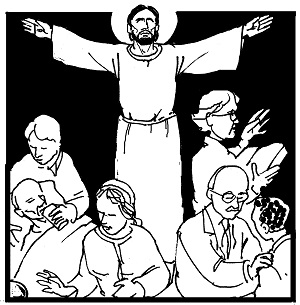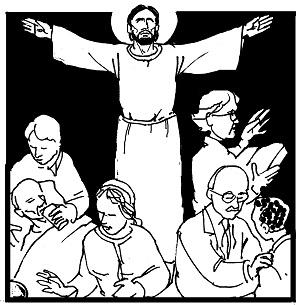

“Which commandment of the law is the greatest?” (Matthew 22:35).
Thirtieth Sunday of the Year
Exod 22:20-26; Ps 18; 1 Thess 1:5c-10; Matt 22:34-40
The Gospels portray Jesus in continuous debate with his critics. They attacked him about Sabbath observance, fasting, ritual washing, paying taxes, divorce, and ultimately his relationship with God. Today a scholar of the law asks him the most basic question of all: What is the central commandment of the law? Jesus’ answer will reveal everything they want to know about his orthodoxy or lack of it, the basic, organizing principle of his entire ministry and all his teachings.
Had Jesus been on a debate stage, the moderator would have been asking him to set aside all the rhetoric to summarize his candidacy in a single statement. Is it “Make America Great Again” or “Build Back Better”? Tell us what you stand for. Tell us who you are?
Jesus answers by revealing that the heart of his campaign is the commandment to love God and neighbor. He recites the prayer said by all Jews twice each day, the Sh’ma: “Hear, O Israel, the Lord, your God, is one. You shall love the Lord, your God, with all your heart, with all your soul, and with all your mind.” He adds as integral to this, “You shall love your neighbor as yourself.” To do this was to keep the whole law.
Jesus and his interlocutor both knew the story of the famous Rabbi Hillel, who claimed he could recite the whole law standing on one foot, then recited the Sh’ma. Keeping the commandment to love was the balance point for every other commandment. Jesus’ entire life was about keeping the Sh’ma. Everything he said and did flowed from this obedience. It unpacks everything in “right relationship” with God, neighbor, Earth, all its creatures, the Universe itself. Every topic discussed in this past week’s final presidential debate can be judged by whether it meets or violates the “right relationship” standard.
Simplicity has its benefits. The “Catholic Sh’ma” may be something as simple as the Sign of the Cross when we dip our fingers into the font as we enter church. In this single gesture, we affirm our baptismal identity vertically and horizontally, acknowledging God above, then our neighbors right and left. The axis of the sign crosses our hearts, our “Yes” to Jesus, whose death and resurrection unites us to God and to one another. To live this sign is to be in right relationship and in balance with everything and everyone. Heart and mind contemplating God, our shoulders bearing up the soul of the world we share, the dignity of each person, the common good of all, the Earth in balance, justice and compassion as the keys to community and to life itself.
Advertisement








